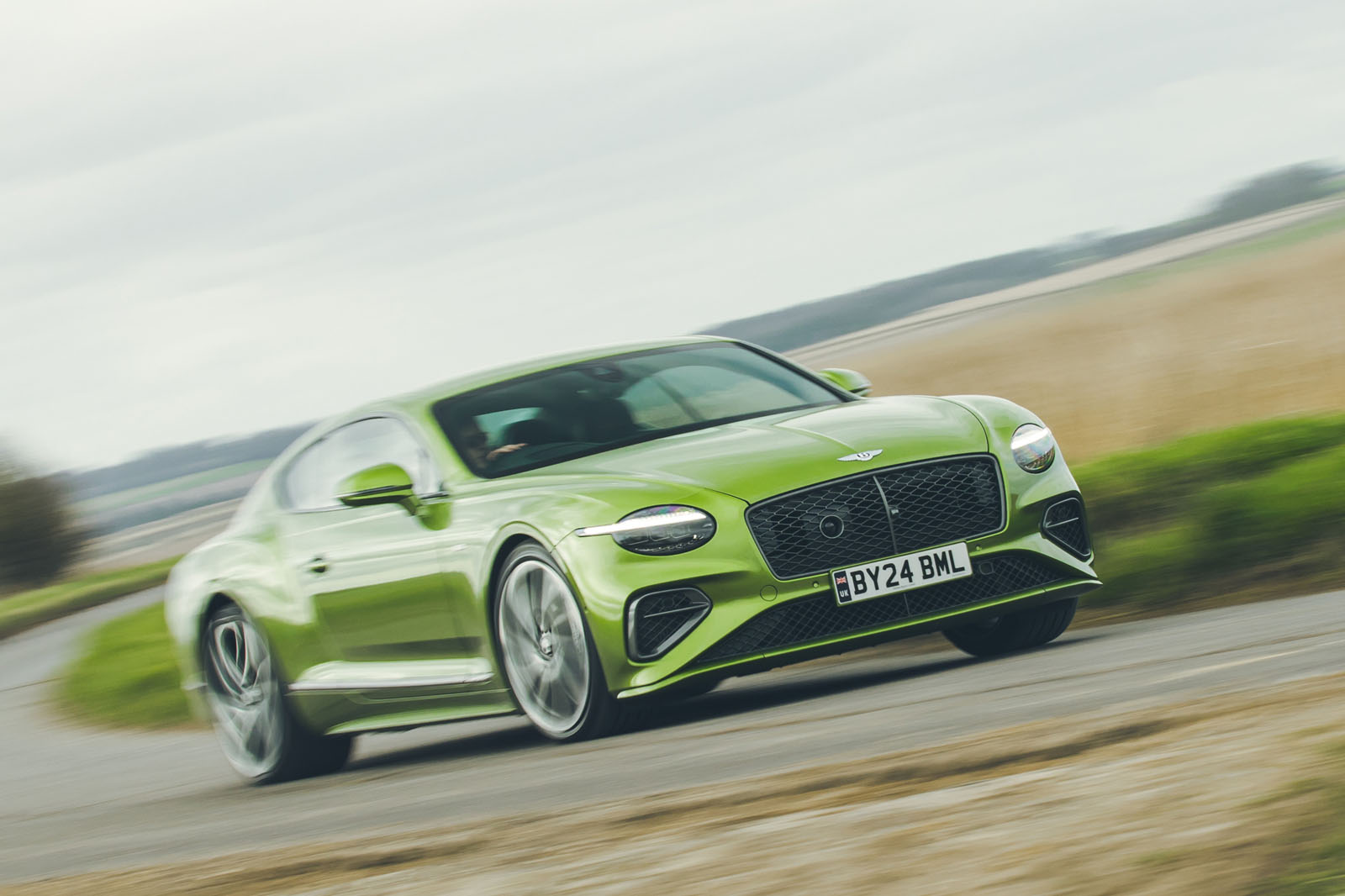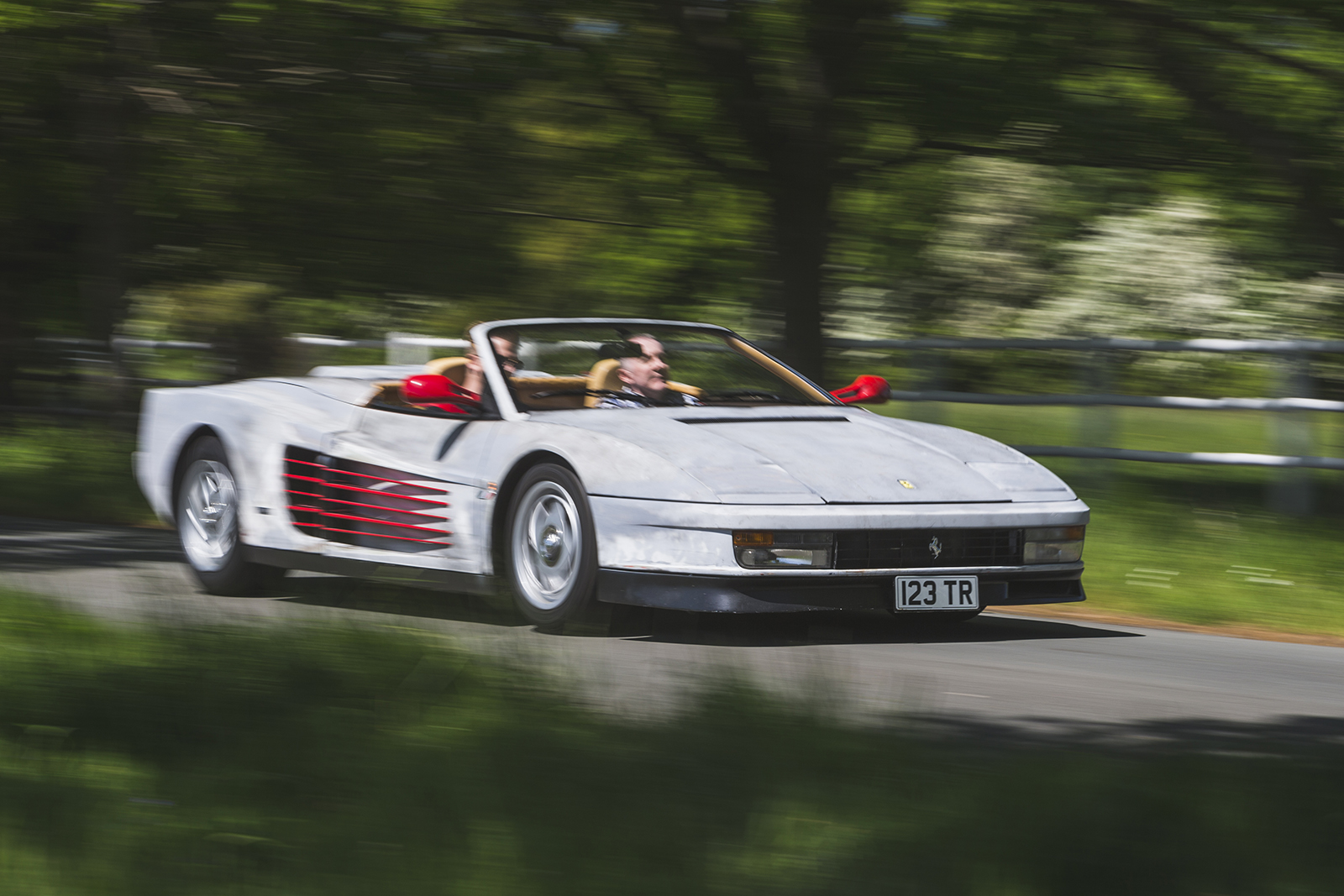While escalating tensions between the US and European Union may cast a long shadow over the Italian wine industry, there were plenty more topics up for discussion at this year’s Vinitaly. Louis Thomas reports.
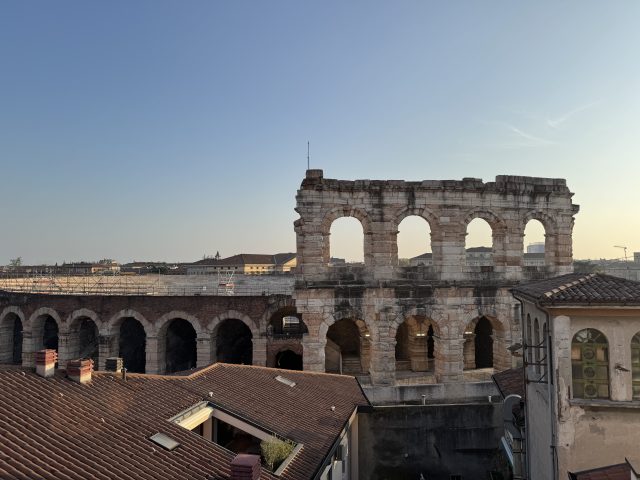
Another busy concluded in Verona yesterday (9 April), with a total attendance of 97,000, 32,000 of whom were international visitors, a 7% increase on last year's fair.
To condense a trade show with 4,000 exhibitors showcasing as rich a wine culture as Italy's into one article would be impossible, but what follows below is a selection of some of the points of interest, aside from the Donald Trump-shaped elephant in the room.
Grammar lessons
A masterclass given by Italy’s first Master of Wine, Gabriele Gorelli MW, called
The Grammar of Tannin: Stories in texture, bringing grip to life offered an alternative approach to tasting red wine, one based on its shape, not its flavour.
The 12 wines, which ranged from “delicate” Barbera to the “textural drama” that is Sagrantino di Montefalco, were all strong representations of their regions, but Gorelli encouraged the audience to taste them in a way which went against instinct.
"I know that the title sounds a bit nerdy, but we need to think about the role texture plays in tasting – we are so keen on tasting based on chemistry: colour, and what we sniff on the nose, imagining what we have on the palate, but we want to reverse this process,” opened Gorelli.
Participants were asked not to swirl the glass, but rather to sip first and think about aroma later. Gorelli conceded: “It's difficult, because it's in our muscle memory!”
Descriptors for tannins, such as prickly, grippy, adhesive, hard, soft and acidity, do not necessarily come naturally to those in the aroma-obsessed wine profession, but this “tactile aspect” of a red wine should not be overlooked, according to Gorelli: “It's above having a more universal language – it can be a more long form description, but people can understand it better. You [producers] should be able to deliver the message, that would be the way to reach new consumers, be more inclusive, and be understood by the market.”
Riserva releases
Aged expressions are nothing new in Italian wine, but there were especially intriguing examples on show this Vinitaly.
One which particularly stood out was from Piemontese sparkling wine powerhouse Cuvage, part of the Argea wine group.
The Cuvage 2020 Alta Langa Riserva Pas Dosé is due to arrive on the market this September, having spent 48 months on the lees and only recently been disgorged. The blend is 75% Pinot Noir, 25% Chardonnay.
“We wanted to take a further step with its ageing,” said director Stefano Ricagno. “It is much more complex, there is a structure from the lack of dosage.”
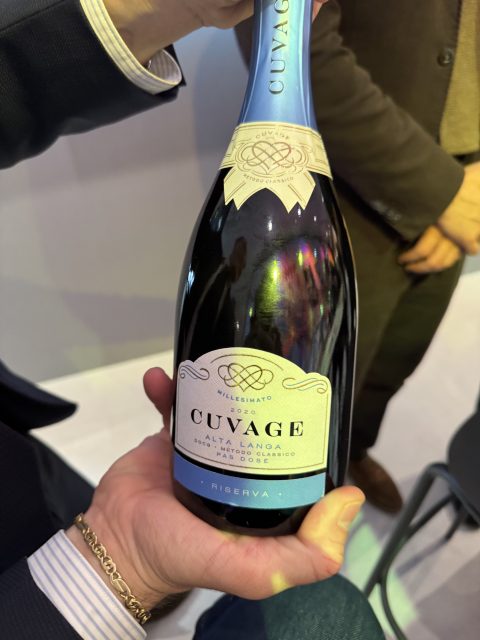
The production regulations for Alta Langa Riserva are due to change next year – at present, 36 months of lees-ageing is required, but soon that will be raised to a staggering 60 months.
Tenuta Stella in Collio, Friuli-Venezia Giulia, produces around 5,000 bottles of its riserva range in total, and it includes single-varietal expressions of the local white grapes Ribolla Gialla (which spends two years in French oak – one in tonneau and one in larger casks) and Friulano, as well as a Merlot.
The white wines certainly looked, due to their deep colour, like passiti, and the comparison isn’t just a visual one, as oenologist Erika Barbieri explained: "You have a nose very similar to a sweet wine, but it's very clean and dry on the palate.”
"For us,” she continued, “the riserva range is the way to characterise Tenuta Stella's philosophy better – translating the work in the vineyard to the bottle. All of the wines are wild yeast fermented and unfiltered.”
Knowing your limit
It isn’t just decisions made in Washington DC which are causing angst among producers – recent changes to Italy’s Highway Code to impose harsher penalties for drink drivers has
rocked the country’s aperitivo and wine-with-dinner culture.
Under the new rules, drivers with a blood alcohol content (BAC) of 0.5 and 0.8 grams per litre can be slapped with a fine in excess of €2,000, for a BAC of 0.8 to 1.5 grams per litre, the fines are even greater, up to €3,200 – suspension/loss of driving licence and even prison sentences are also possible, with the severity of the punishment dependent on the BAC.
Although Tenuta di Castellaro on the island of Lipari is certainly remote, being ‘accessible’ by a flight to Catania, a two hour drive to the port of Milazzo, and an hour and 50 minute ferry trip to the Aeolian Islands, its winery still receives 11,000 visitors each year.
“During Covid, Italians from the north who normally went to Greece on vacation could not travel as far, so we became the most exotic destination they could go to,” said Umbria-born export manager Daniele Sassi.
However, Sassi is worried about how these new drink driving punishments will affect wine tourism and the hospitality sector as a whole: “The new fines for drink driving make everyone scared to drink, and that affects restaurants as they don't sell more than a glass – selling one bottle between five or six people is a problem.”
Non-alc arrival
Non-alcoholic wine has its critics in the Italian drinks sector, especially from those who consider ethanol to be an integral part of a wine. However, in spite of some opposition, the law permitting non-alcoholic ‘wines’ to be labelled as such was signed at the end of last year.
For Antonio Ciccarelli, who handles communications for major wine group Piccini 1882, the launch of a range of dealcoholised wines is a commercial coup.
“The world market for dealcoholised wine is €1 billion, in a few years it will be €2.6 billion – it would be stupid just to leave it to the Spanish and Germans to make it all,” he remarked. “The first problem was the name - you couldn't call it vino, but I say that non-alcoholic 'beer' has been on the market for 20 years. Beer is not in our culture, so there wasn't that resistance.”
Ciccarelli also pointed to the aforementioned clampdown on drink driving as a factor which is driving demand from restaurants concerned about a dip in wine sales for non-alcoholic alternatives.
Although a large number of companies are now adding these kinds of products to their portfolios, don’t expect any to abandon the regular-strength stuff anytime soon.
"It's like a donut – it has a hole in it, the alcohol is missing,” said Ciccarelli. "With inverse osmosis, you lose part of the aroma.”
But as technology improves, so will the quality, and Piccini 1882’s range has already gained its gastronomic fans: “There is a Michelin-starred restaurant which ordered 12 bottles to try, and a week later they bought 120!”
Italian Wine Brands is another company which has invested heavily into dealcoholisation technology, and after two years of research, its Grande Alberone Alcohol Free Sparkling is ready for the market.
Business development manager Gianluca Antonini argued: "Beer and spirits opened the door for us wine producers because they were the first ones to do this – being able to produce quality products with zero alcohol, which made it a challenge for us, as we had to be able to create a product on a par!"
Sustained success
‘Sustainability’ is not a new concept in the wine industry, but while it is a term which is frequently bandied around, there are companies striving to achieve recognised certifications for sustainable practices.
Among them is historic Prosecco producer Follador, which is hoping to gain the Equalitas badge of approval by the end of this year.
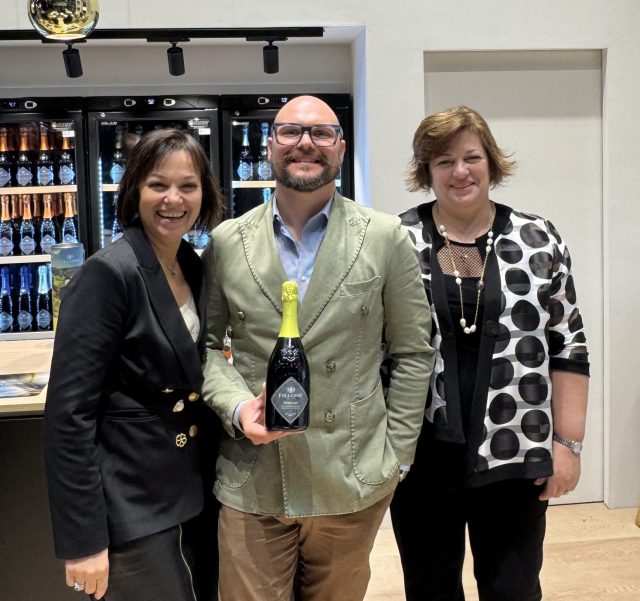
Asked whether certifications such as Equalitas are becoming more commercially desirable for brands, marketing and sales manager Cristina Follador said: “Yes, people are becoming more and more sensitive to this – sustainability is an overused term, but it's not consistently defined. Our aim is to grow excellent Glera, using the best tech on the market to extract its best properties.”
In addition to adding solar panels to the winery and deploying other energy-saving measures, sales of Follador’s Fosélios Prosecco Superiore Valdobbiadene DOCG Brut go towards funding the planting of 500 trees every year.
“It’s to show that we are sensitive to the future,” said Follador, “our slogan is ‘toasting to life, nurturing the future’.”
Total immersion
Pasqua continued its tradition of using the fair as a platform for art patronage, with this year’s installation at Giardino Giusti, tying in with the Valpolicella-based producer’s centenary, titled
Ode to the Future.
The exhibition, open to the public, featured an immersive digital experience in the 'Infinity Room', and an installation of artworks inspired by Pasqua wine labels, including Sofia Crespo's riff on the Hey French You Could Have Made This But You Didn’t.
Also offering an immersive experience, though this time at the fair itself, was the Consorzio Tutela Lugana DOC. Visitors to its stand in Palaexpo gave their names, were handed a glass of sparkling Turbiana, and then escorted into a space where they were surrounded by three walls of screens, showing shots of Lake Garda.
This was certainly a good way to get a sense of the region, but it then took a surprising twist – the footage then showed a figure walking towards the spectator at the stand, except it transpired that this wasn't a pre-recorded piece to camera at all but was entirely live when the person on the screen called out your name. The attendee was able to communicate with the actor in Lugana via the cameras in the room and a microphone.
Virtual Reality was a feature of last year's Vinitaly, but this was something altogether very different, and a smart, highly memorable initiative at that. Consorzio director Edoardo Peduto said that it came about as a result of a desire to do something "different", and revealed that more than 500 people had partaken in the unique experience. A glimpse behind the scenes into the production side revealed that this experience was run with the same rigour as live television.
Continuity
While the Italian wine world seems to be shifting on its axis, it is important not to overlook what has stayed the same.
Alberto Lusini, now almost a year into his role as CEO of Angelini Wines & Estates, cited the Amarone della Valpolicella Classico of the Bertani brand, which joined the group (then-called Tenimenti Angelini Estates) in 2011.
“We have been a producer of Amarone since 1958 – so even when other producers changed to a richer, bolder style in the 90s and early 2000s, Bertani kept its original style. Funnily enough, the consumer taste is shifting back to this. You recognise when tasting it that there has been an appassimento process, but the nose is very austere, extremely Barolo-style.”
“The original winemaker was there from 1958 to 1985, and he’s still alive – he’s 93, very sharp, and he still recognises the style,” said Lusini. “It is exactly the same. Of course as it ages it evolves, but it doesn’t lose its identity.”
Bertani’s 2015 vintage is what is currently on the market. The Amarone typically spends eight-to-nine years in Slavonian oak casks, and then at least a year in the bottle before it is released.
“Our goal is to create a wine which is enjoyable now, but will keep for the next 30 years.”
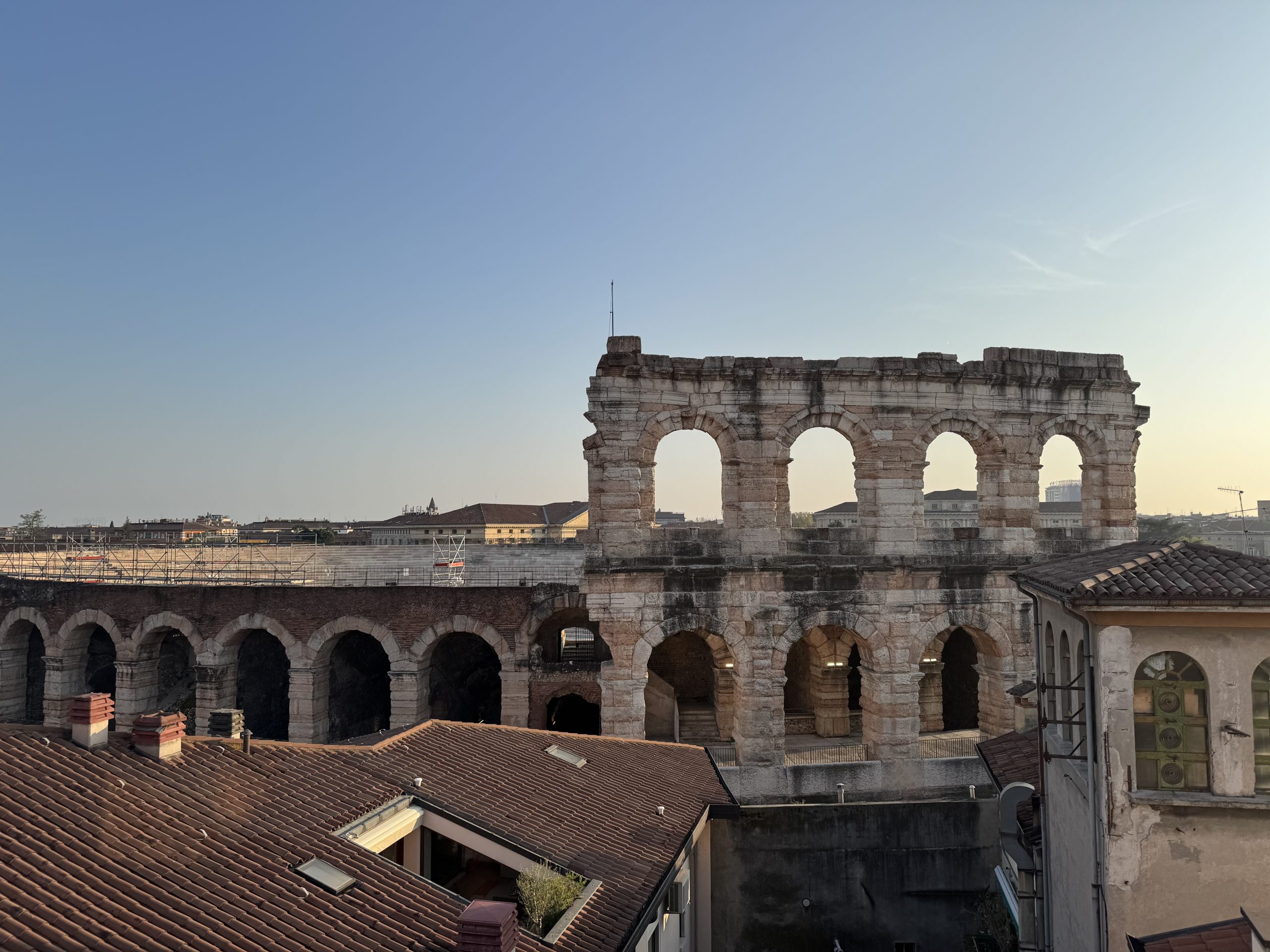
 Another busy concluded in Verona yesterday (9 April), with a total attendance of 97,000, 32,000 of whom were international visitors, a 7% increase on last year's fair.
To condense a trade show with 4,000 exhibitors showcasing as rich a wine culture as Italy's into one article would be impossible, but what follows below is a selection of some of the points of interest, aside from the Donald Trump-shaped elephant in the room.
Another busy concluded in Verona yesterday (9 April), with a total attendance of 97,000, 32,000 of whom were international visitors, a 7% increase on last year's fair.
To condense a trade show with 4,000 exhibitors showcasing as rich a wine culture as Italy's into one article would be impossible, but what follows below is a selection of some of the points of interest, aside from the Donald Trump-shaped elephant in the room.
 The production regulations for Alta Langa Riserva are due to change next year – at present, 36 months of lees-ageing is required, but soon that will be raised to a staggering 60 months.
Tenuta Stella in Collio, Friuli-Venezia Giulia, produces around 5,000 bottles of its riserva range in total, and it includes single-varietal expressions of the local white grapes Ribolla Gialla (which spends two years in French oak – one in tonneau and one in larger casks) and Friulano, as well as a Merlot.
The white wines certainly looked, due to their deep colour, like passiti, and the comparison isn’t just a visual one, as oenologist Erika Barbieri explained: "You have a nose very similar to a sweet wine, but it's very clean and dry on the palate.”
"For us,” she continued, “the riserva range is the way to characterise Tenuta Stella's philosophy better – translating the work in the vineyard to the bottle. All of the wines are wild yeast fermented and unfiltered.”
The production regulations for Alta Langa Riserva are due to change next year – at present, 36 months of lees-ageing is required, but soon that will be raised to a staggering 60 months.
Tenuta Stella in Collio, Friuli-Venezia Giulia, produces around 5,000 bottles of its riserva range in total, and it includes single-varietal expressions of the local white grapes Ribolla Gialla (which spends two years in French oak – one in tonneau and one in larger casks) and Friulano, as well as a Merlot.
The white wines certainly looked, due to their deep colour, like passiti, and the comparison isn’t just a visual one, as oenologist Erika Barbieri explained: "You have a nose very similar to a sweet wine, but it's very clean and dry on the palate.”
"For us,” she continued, “the riserva range is the way to characterise Tenuta Stella's philosophy better – translating the work in the vineyard to the bottle. All of the wines are wild yeast fermented and unfiltered.”
 Asked whether certifications such as Equalitas are becoming more commercially desirable for brands, marketing and sales manager Cristina Follador said: “Yes, people are becoming more and more sensitive to this – sustainability is an overused term, but it's not consistently defined. Our aim is to grow excellent Glera, using the best tech on the market to extract its best properties.”
In addition to adding solar panels to the winery and deploying other energy-saving measures, sales of Follador’s Fosélios Prosecco Superiore Valdobbiadene DOCG Brut go towards funding the planting of 500 trees every year.
“It’s to show that we are sensitive to the future,” said Follador, “our slogan is ‘toasting to life, nurturing the future’.”
Asked whether certifications such as Equalitas are becoming more commercially desirable for brands, marketing and sales manager Cristina Follador said: “Yes, people are becoming more and more sensitive to this – sustainability is an overused term, but it's not consistently defined. Our aim is to grow excellent Glera, using the best tech on the market to extract its best properties.”
In addition to adding solar panels to the winery and deploying other energy-saving measures, sales of Follador’s Fosélios Prosecco Superiore Valdobbiadene DOCG Brut go towards funding the planting of 500 trees every year.
“It’s to show that we are sensitive to the future,” said Follador, “our slogan is ‘toasting to life, nurturing the future’.”

















